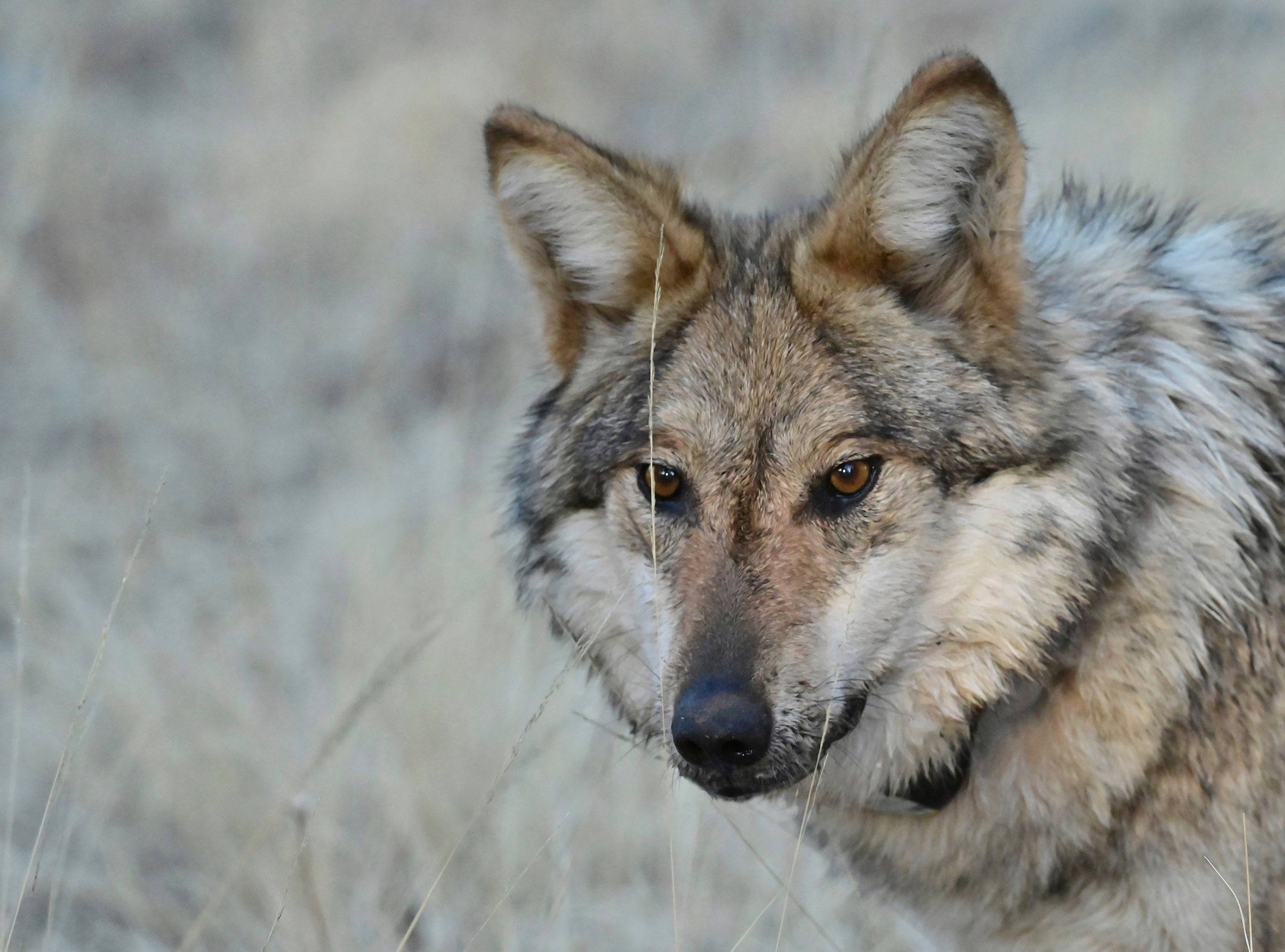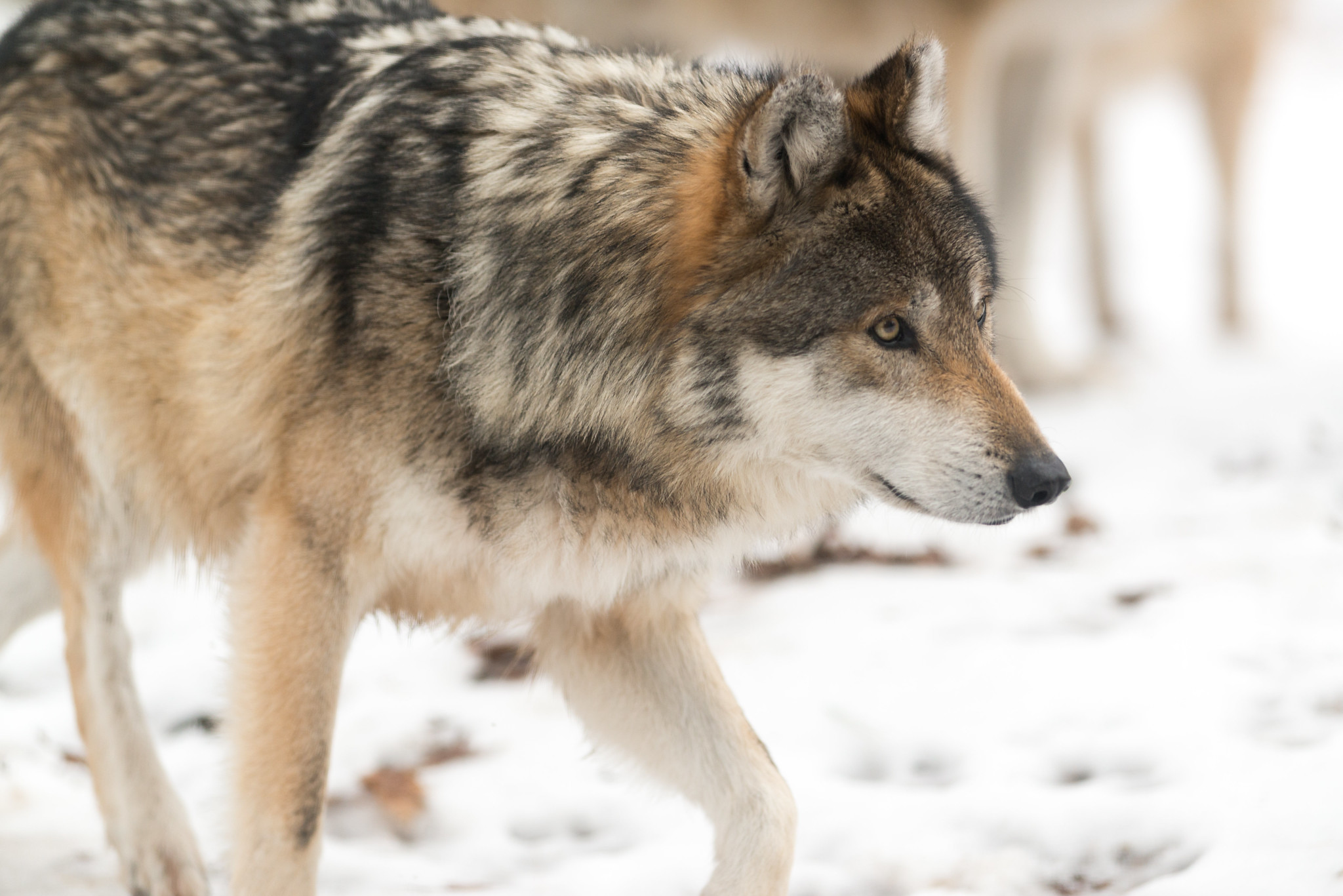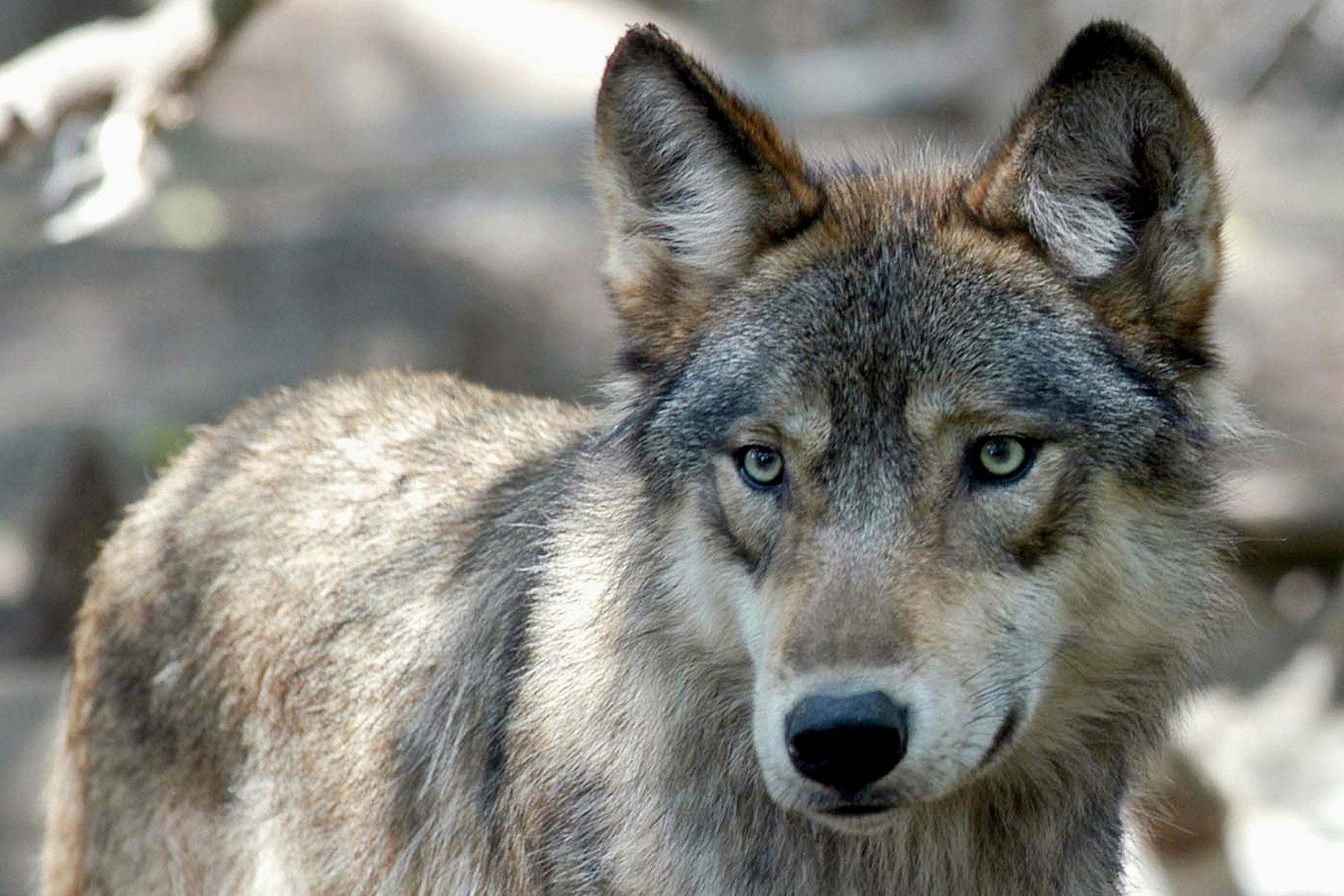The policy-setting board for the Wisconsin Department of Natural Resources approved a wolf harvest quota of 300 wolves for this fall’s wolf hunt.
The 5-2 vote culminated with the head of the DNR accusing the board’s chair of playing politics. Natural Resources Board Chair Fred Prehn has faced criticism and repeated calls to step down from multiple groups ahead of the board’s vote on the wolf harvest quota. Prehn’s term expired on May 1.
“You get a sense as to why the chair chose to stay,” said DNR Secretary Preston Cole after the vote. “I wonder what the vote would’ve been with Sandy Naas sitting in that chair. You now know why he is sitting in that chair.”
News with a little more humanity
WPR’s “Wisconsin Today” newsletter keeps you connected to the state you love without feeling overwhelmed. No paywall. No agenda. No corporate filter.
The board has become the center of an unlikely political power struggle. Democratic Gov. Tony Evers announced the appointments of Ashland school teacher Sandy Naas and Milwaukee real estate developer Sharon Adams on April 30 “to fill vacancies created by the expiring terms” of Prehn and board secretary Julie Anderson. Only Anderson stepped down.
Prehn has refused to leave and points to a state Supreme Court ruling that allows him to remain in his seat until the Republican-controlled Senate confirms Evers’ nominee.
“I think it would’ve passed without me being present, Mr. Secretary,” said Prehn. “I think you’re out of line.”
The board’s vote goes against a recommendation by the DNR to set the harvest at 130 wolves due to uncertainty over the population’s response to the February wolf hunt. State-licensed hunters harvested nearly double their 119-wolf quota, killing 218 wolves in less than 72 hours.
Discussion of the wolf harvest quota grew heated at times as board members and the DNR debated the state’s obligations to tribes and whether the harvest level should follow the state’s existing wolf management plan.
Some board members, including Vice Chair Greg Kazmierski, argued they’re responsible for bringing the population in line with the state’s goal of 350 wolves outlined in the agency’s existing plan.
“We are stuck with what’s in front of us today, and we need to show at least some effort that we’re moving toward that goal,” said Kazmierski.
Critics argue the existing plan isn’t based on the best available science and is vastly outdated. It was first written in 1999 and last updated in 2007.
In January, the Trump administration removed federal protections for most gray wolves across the country, including Wisconsin. Multiple environmental and wildlife groups have since filed legal challenges, seeking to restore protections for the animal.
The quota set by the board will be split between state-licensed hunters and Wisconsin’s Ojibwe tribes. The tribes are entitled to claim up to half of the quota under a federal court ruling that affirmed their treaty rights. Tribes were allotted 81 wolves in the February hunt, but they didn’t harvest the animal because they view the wolf as a relative that should remain protected.
Supporters of the wolf hunt called for quotas as high as 500 wolves, prompting caution from the DNR. Keith Warnke, administrator of the DNR’s fish, wildlife, and parks division, warned that harvesting more than 25 percent of the state’s wolf population might trigger a review by the U.S. Fish and Wildlife Service. The federal agency is conducting five-year monitoring of state management following the wolf’s delisting. Federal wildlife officials have said they might consider relisting the wolf if state actions are warranted.
Wisconsin Ojibwe tribes have asked the Fish and Wildlife Service to reconsider the wolf’s delisting due to what they see as systemic failures of Wisconsin’s wolf management. The tribes feel their fate is intertwined with the wolf, according to John Johnson Sr., president of the Lac du Flambeau Band of Lake Superior Chippewa. He also chairs the Voigt Intertribal Task Force.
“Since native people lived in coexistence with wolves for longer than Europeans have walked North America, the ma’iingan we know and respect and understand seems to be a different animal than the wolf that so many others despise,” said Johnson.
The DNR has said a state requirement to provide 24-hour notice prior to closing the season hindered their ability to swiftly respond as hunters reached the quota, as well as the high ratio of licenses sold to wolves that were harvested.
Critics point to the February hunt as evidence that states are incapable of managing the wolf population while hunters argue there are too many wolves on the landscape.
Carl Schoettel, president of the Wisconsin Bear Hunters Association, urged the board to set a quota of 400 wolves.
“We need to manage these animals, and we should make sure that we take more consideration of people that live with the wolves,” said Schoettel. “It seems like there’s not a lot of balance.”
The number of wolves in Wisconsin has grown from just 25 animals in 1980 to 1,195 wolves prior to the February wolf hunt, according to the DNR. DNR staff say they were unable to provide a post-hunt population estimate this year since much of their monitoring data had been collected prior to the February hunt.
Hunters and farmers have seen increasing conflicts with wolves as their range has expanded. So far, wildlife managers and landowners have removed 38 problem wolves since the wolf’s delisting.
Researchers warned the board that the state’s wolf population could be drawn down to unsustainable levels with another hunt.
Adrian Treves, an environmental studies professor at the University of Wisconsin-Madison, said the population is at risk of dropping below 350 wolves. A recent study by Treves and other researchers concluded that hunters and poachers might have killed a third of the wolf’s population since the animal’s delisting.
In a statement following the vote, conservation group Wisconsin’s Green Fire said the quota is likely to cut the state’s wolf population in half.
“Removing 300 wolves in another hunt would likely have a destabilizing effect on almost every wolf pack in the state,” said Adrian Wydeven, a former DNR wolf biologist. “There is no other wildlife species where that level of reduction would be acceptable. And it’s highly likely it would trigger a U.S. Fish and Wildlife Service review of state management.”
Animal rights groups and wolf advocates urged the board to set a zero quota despite Wisconsin law that requires a wolf hunt when the animal isn’t listed as an endangered species.
“We’re all very aware of the (law) and that we are held to a hunt, but that does not mean that we should have such a high excessive quota, especially seeing what happened,” said Megan Nicholson, Wisconsin State Director of the Humane Society of the United States.
State-licensed hunters killed 528 wolves in the three seasons a hunt was held in Wisconsin before a federal judge’s ruling placed the animal back on the endangered species list in 2014.
The season that begins on Nov. 6 will mark the first time Wisconsin has held two hunts in a single year after Kansas-based Hunter Nation sued to force a hunt in February. The DNR had previously planned to hold a hunt this fall. But hunters sued over fears that President Joe Biden’s administration may place the animal back on the endangered species list before November and lose a chance to harvest the wolf.
As the fall season approaches, DNR officials are proposing to end night hunting of wolves, shorten the registration window after harvest and issue zone-specific tags.
The agency is aiming to bring an emergency rule before the board in September that would bar night hunting and shorten the registration window for this fall’s wolf hunt in November. DNR officials hope to have permanent rules in place as early as next spring.
Wisconsin Public Radio, © Copyright 2026, Board of Regents of the University of Wisconsin System and Wisconsin Educational Communications Board.



